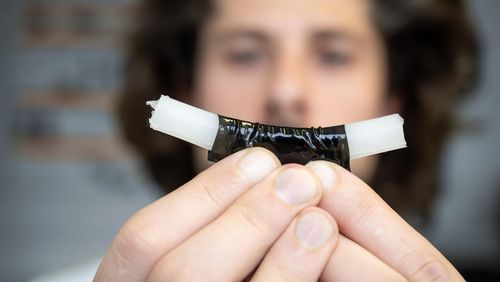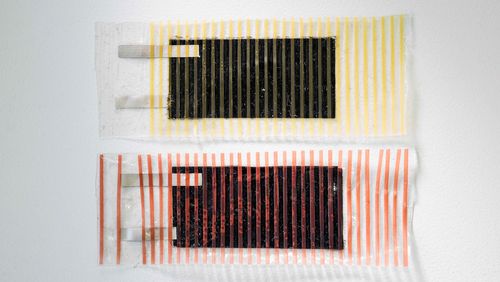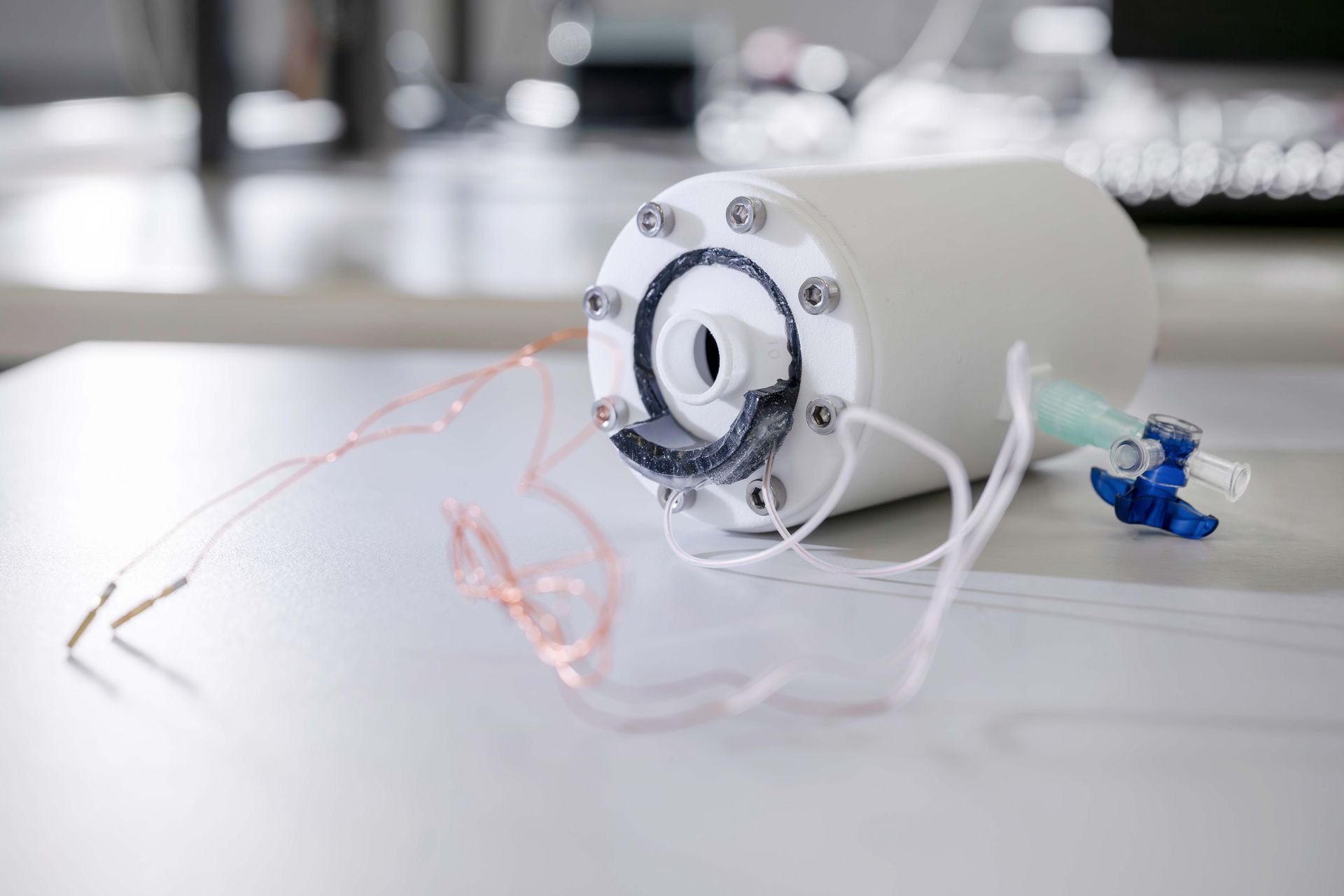
Gentle pumps for weak hearts
Researchers at the Center for Artificial Muscles at the EPFL Neuchâtel campus are making astonishing progress. In a recent study, the team led by Yves Perriard and Yoan Civet developed a tubular artificial muscle that’s strong enough to match the blood flow rate in the human circulatory system.
Our hearts are powerful pumps. They continuously push blood—five to six litres per minute—through our bodies, and that our entire life. People with cardiac insufficiency need some extra support for their hearts, but the cardiac assist devices currently in use are made of rigid materials and have serious drawbacks: in addition to being hard on the heart lining, they can destroy red blood cells and cause blood clots.
An alternative is in the works at the Center for Artificial Muscles (CAM) at the Neuchâtel campus of the École polytechnique fédérale de Lausanne (EPFL). In a project financed by the Werner Siemens Foundation and led by CAM director Yves Perriard and managing director Yoan Civet, researchers are developing artificial muscles out of soft, extremely elastic materials, and then fitting them with electrodes. These battery-powered devices—or “dielectric elastomer actuators”—expand and contract, just like real muscles.
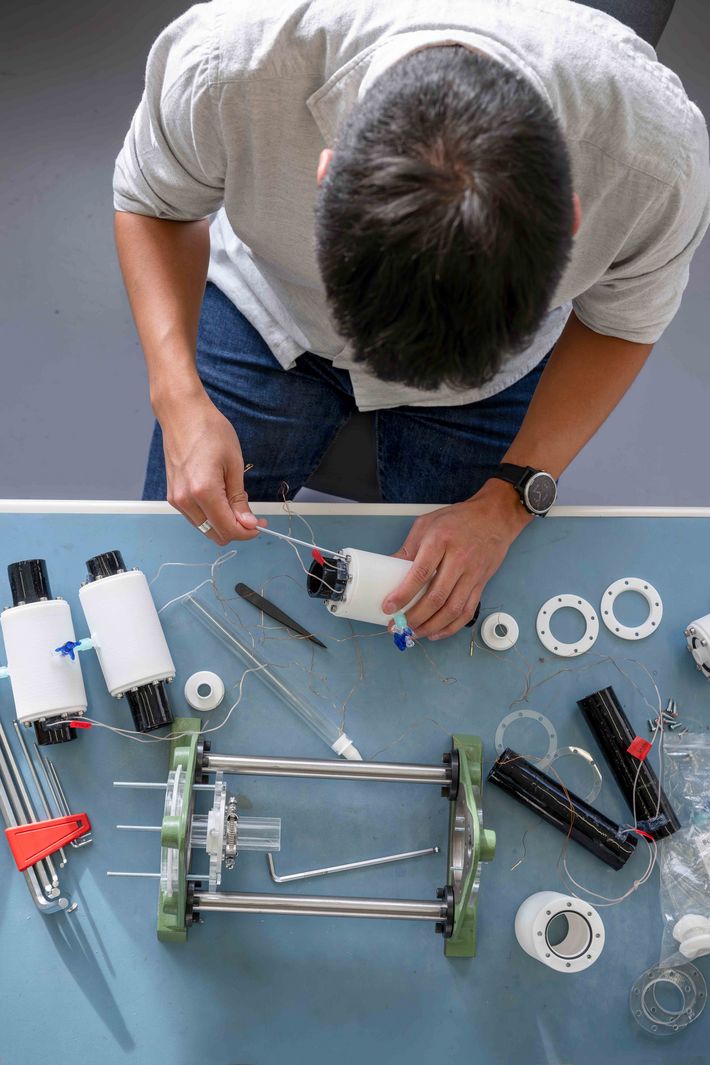
Three pump models
The main challenge lies in using the gentle technology to attain a pumping capacity high enough to offer a weakened heart effective support. The past few years have seen the Neuchâtel team making steady progress towards this aim, and they’ve now cleared a major obstacle: for the first time, the researchers constructed a highly elastic pump that generates the blood flow rate needed for a functional human circulatory system. The study findings (*) were recently published in scientific journal Advanced Engineering Materials—the CAM development was even selected for the cover of the magazine.
For the study, the researchers designed three distinct tubular pumps measuring five centimetres in length, three in diameter. The first pump was set for a relatively low (blood) pressure of fifteen millimetres of mercury (mmHg), which corresponds to the average pressure in the inferior vena cava, the vein responsible for carrying blood from the lower half of the body back to the right atrium of the heart. The second model was optimised for an internal pressure of seventy mmHg, the lower limit in the human aorta. The third pump was designed to work at one hundred and twenty mmHg, the upper limit of pressure in the aorta. Wall thickness in the three pumps was adapted accordingly, with each model having a different number of elastomer layers.
New flow record
“The model for one hundred and twenty mmHg achieved the highest performance,” Yoan Civet relates. Its maximum flow rate was 6.5 litres per minute. That’s higher than the blood flow rate in a healthy person, whose heart pumps roughly five to six litres per minute, and it’s twice to three times higher than the record flow rate achieved by dielectric elastomer actuators previously cited in the literature.
In addition to flow rate, a second important parameter is involved: pressure head, which is the resistance a pump can or must overcome in order to pump a liquid to the end of a tube—in the case of the heart, to the end of a blood vessel. Pump number three attained a pressure head of 27.5 mmHg. However, although this performance is remarkable, “it’s still not good enough,” as Yves Perriard concedes. Indeed, in cases of cardiac insufficiency, the most commonly affected part of the heart is the stronger left ventricle, whose pressure head is considerably higher than in the pump fabricated by the Neuchâtel team.
“It might be possible to use this device on the right side of the heart, where the pressure is significantly lower,” Perriard says. One potential application would be in children born without a right ventricle; the current solution in such cases is a surgical procedure to divert the blood from the lower body directly into the pulmonary arteries.
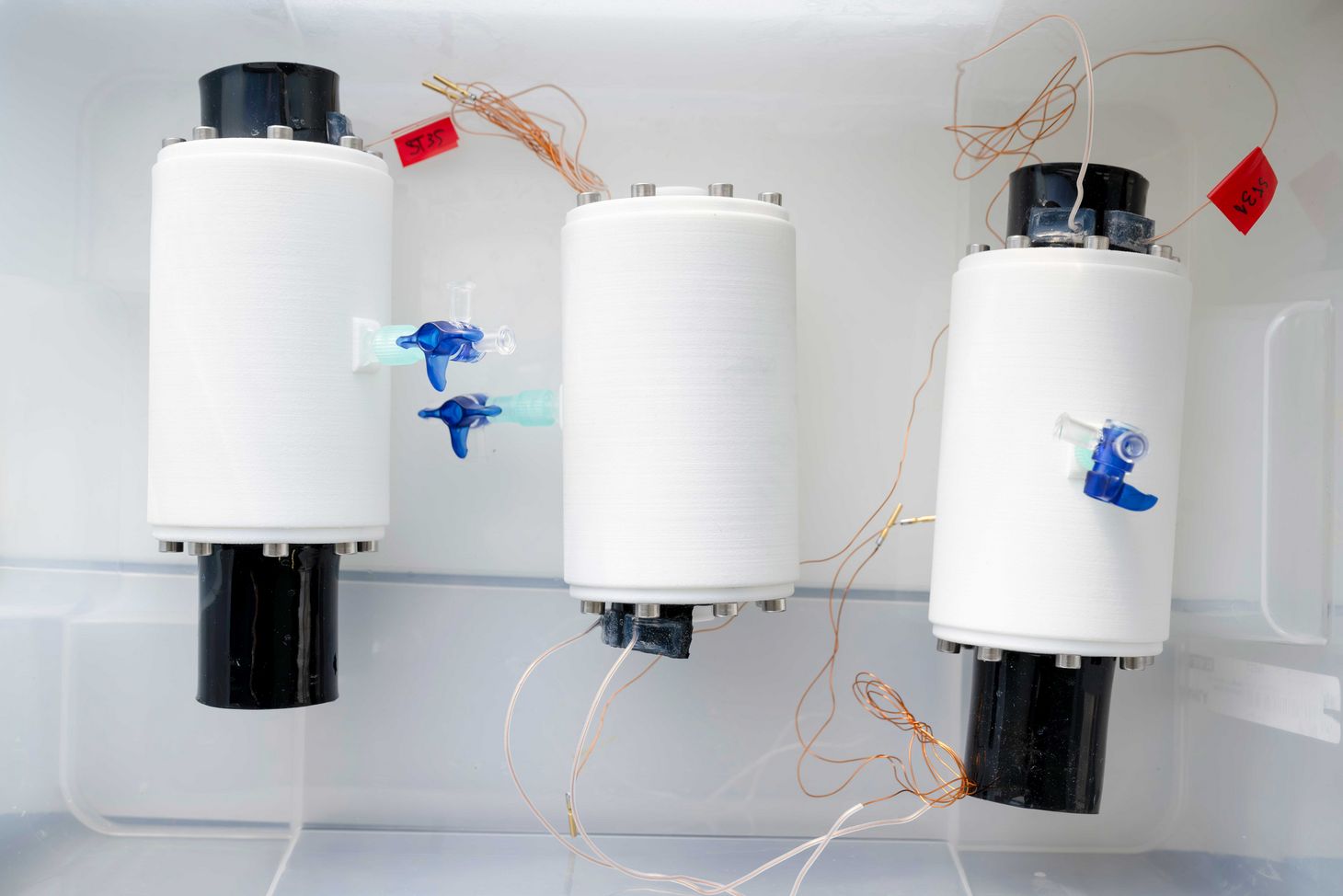
Setting even higher aims
Perriard says the results are very promising, even if the system isn’t yet ready for use in humans. “The study is a big step towards an overall better understanding: for example, we’ve demonstrated how the tubes’ length and construction as well as their wall thickness respond to the pressure generated.”
The researchers are already exploring several approaches and methods for further improving their elastomer pumps. One idea is to insert reinforcement fibres into the actuators with the aim of increasing pumping capacity, Yoan Civet explains. “A postdoc who is joining our group will be pursuing this strategy.”
If the team succeed in yet again substantially improving the capacity of the tubular artificial muscles, their development could represent a real alternative to conventional cardiac assist devices. Especially because their pumps have certain advantages: they produce no audible noise, are well-tolerated by the human body, and they’re both compact and lightweight. Indeed, the designs fabricated and tested in the study weigh only about twenty-five grams. What’s more, they consume just two hundred and fifty-eight milliwatts at a voltage of five kilovolts, whereas current motorised devices often require several watts to attain the necessary performance.
Both researchers say applications outside the cardiovascular system are also feasible, as there are various pump-driven processes in the human body. The artificial muscles could support bowel contractions in affected people, or they could be used to stimulate the flow of lymph through the body.

